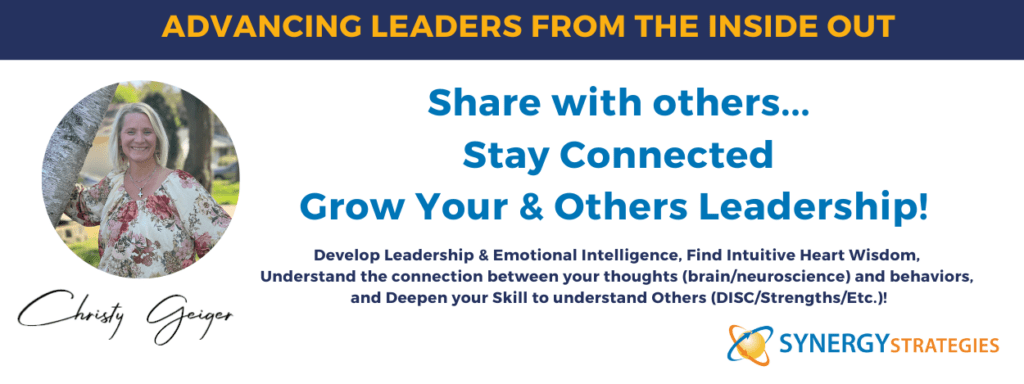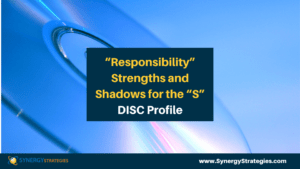Trusting Your Inner Compass: A Leadership Skill for Decisive Action
In both our personal and professional lives, the ability to trust our intuition , aka: “inner compass”, is invaluable. This skill is essential for leaders who often need to make quick, high-stakes decisions, even when they don’t have all the facts. But understanding and accessing this “gut feeling” can sometimes feel elusive, especially in the fast-paced, noise-filled world we live in. Understanding the facts, context, and essential data is part of the equation, but ignored gut feelings can subconsciously lead to indecision, conflict, squishy communication, partial action, procrastination, etc. Understanding our gut voice helps us align the facts with feelings and our internal “knowing”. The concept of trusting your gut is essential for all of us, no matter our role, whether we are leading a team, managing a project, or making personal choices. Below are 5 steps to walk you through the skill of tapping into your inner gut and compass, so you can access your intuition clearly, even in challenging situations.
5 Key Steps:
- Know Your Inner Compass. Understanding your intuition begins with practice. To strengthen this skill, start by recalling moments when you “just knew” something without a logical explanation. Maybe you sensed that a person was trustworthy or that a particular decision would yield positive results. When you regularly observe these instances, you become better attuned to recognizing them in the future.
Reflecting on your “gut knows” can be incredibly helpful for refining this skill over time. It’s not about magic or guessing; it’s about tuning into what your experience and instincts have already taught you.
- Identify and Clear the Noise. In the digital era, distractions, external pressures, and rapid information flow can cloud our internal thoughts, making it difficult to hear our intuition clearly. Clearing the noise means recognizing what might be creating confusion: is it fear of judgment, urgency from deadlines, or pressure from others’ expectations? Try and step away from media for a bit, do a journal or clearing activity to write your thoughts and try and focus on what is really bothering you, what is important to you, and what you are trying to decide or deal with. Once you identify what you are really trying to address, you can reflect on the difference between what you feel you “should” do (external pressures) versus what you “want” (want from your internal wisdom and knowing) to do (internal sense). Techniques like mindfulness, a brief digital detox, or even a short walk can be great ways to clear your head, allowing your true instincts to surface.
- Ask Yourself Clarifying Questions. After you have identified what you are really trying to get understanding on. Keep drilling in. In decision-making, questioning is key. Leaders who successfully navigate tough choices know that asking the right questions often brings clarity. If you’re feeling uncertain, ask yourself questions such as, “What am I truly afraid of here?” or “What facts support my intuition?” Asking questions helps separate genuine gut feelings from other emotions, such as fear or guilt, that might be influencing your decision. Notice the emotions that are showing up in the situation, as those can cloud our gut voice, as our “saboteurs/gremlins” attempt to protect but derail our gut voice, like a magnet near a compass. Make sure to identify thoughts and feelings so you can remove any energy that would cloud clarity. Discernment is crucial. This step ensures that you’re truly following your inner compass (higher self and sage voice) rather than reacting out of fear or pressure (from the saboteurs and gremlins).
- Take Time to Sit with Your Decision. During uncertainty, giving yourself a pause to sit with your feelings can be a game-changer. Often, taking a short period, like 24 hours, allows time for reflection without letting the opportunity slip away or responding too slowly. During this time, stepping away from the topic and seeing what shows up can be useful. Sometimes it is that walk or shower time, that new thoughts hit your clear mind, and you have a deeper sense of what is important or what this is about on a deeper level. Having a conversation with a trusted friend or your coach can help bring clarity as you reflect on where you were, where you want to go and your thoughts about what is between. Often working through this confirms your gut/compass direction or reveals gaps/misalignment or something off track. Reflection enables you to create space to check and assess if your decision aligns with your deeper values and stays clear even after a little time, ensuring it is your gut and not “emotions”, “reactions” or other motives.
- Trust and Test Your Gut. Once you’ve taken the time to clarify your inner guidance, commit to your decision. Stay observant, and in the process there are often developments and evolution. If a decision keeps resurfacing or causing doubt, this might indicate it wasn’t truly aligned with your inner compass or it is something that needs co-designing or developing with someone rather than working autonomously. The “boomerang” effect (where the issue comes back to you) is a useful checkpoint, prompting you to re-evaluate and make any necessary adjustments. It does not mean the gut was wrong, it means there are more layers and dynamics to be concerned.
The higher you rise in leadership, the more you need to rely on this inner compass. Whether you’re facing decisions about team dynamics, strategic direction, or high-stakes commitments, a finely tuned intuition can be one of your greatest assets.
Bottom line, use your inner compass and gut to lead effectively by:
- Knowing Your Intuition: Practice tuning into it by recalling times when you “just knew.”
- Clearing the Noise: Remove external pressures and distractions to access your inner compass.
- Asking Clarifying Questions: Discern between genuine intuition and emotion-driven reactions.
- Reflecting: Take time to sit with your decision, allowing yourself to gain clarity.
- Trusting Your Decision, Testing for “Boomerangs”: Commit to your decision and observe if doubts return, indicating re-evaluation might be needed.
Mastering the art of intuition takes patience and practice. But for those in leadership, honing this skill is a powerful way to navigate complex decisions and guide your team with confidence and clarity.
3 Key Critical Steps to Shift from Maintenance to Growth Mode: A Leader’s Guide






